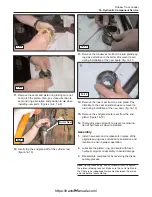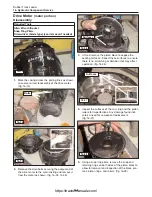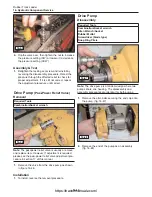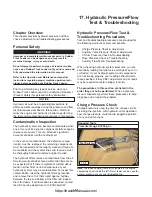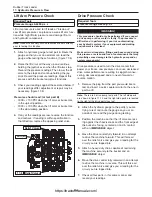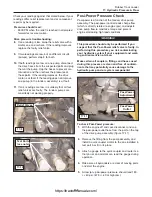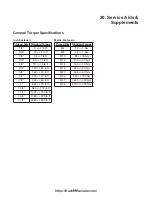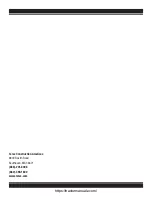
Chapter Overview
This chapter provides hydraulic pressure and flow
check, adjustment and troubleshooting procedures.
Personal Safety
Improper or incomplete maintenance/repair of a Rubber
Track Loader can be dangerous and may result in
machine damage, injury or even death.
Do not attempt to perform any type of repair or mainte-
nance on a Rubber Track Loader until you have read and
fully understood the information in this manual.
Refer to the Operation and Maintenance manual for
instructions regarding proper machine operation tech-
niques before operating any Rubber Track Loader.
Prior to performing any type of service work on a
Rubber Track Loader, read and understand Chapter 1
(Product Safety) for personal safety information.
Hydraulic oil must be at operating temperature to
obtain accurate readings during the pressure and flow
test procedures described in this section. Start and
warm the engine and hydraulic oil prior to performing
the test and troubleshooting procedures in this section.
Contamination Inspection
The hydraulic system can become contaminated when
one or more of it’s dynamic components fails or begins
to wear excessively. This can introduce significant
amounts of debris into the hydraulic oil.
In the event of contamination, the defective compo-
nent(s) must be replaced, the remaining components
must be inspected and thoroughly cleaned (if found to
be reusable) and the system lines and reservoir must
be thoroughly flushed to restore original function.
The hydraulic filters remove contaminants from the oil.
Small amounts of debris found within the filters are to
be expected, but If there is significant metallic debris
found in either filter, certain components of your
hydraulic system may be contaminated. To inspect for
contamination, label the hydraulic filters by location
and remove them. Cut them apart approx. halfway
between the top and bottom of the filter and inspect
them for debris. If contamination is suspected, contact
the ASV service department at 1-800-346-4367.
Hydraulic Pressure/Flow Test &
Troubleshooting Procedures
Test and troubleshooting procedures are provided for
the following Hydraulic system components.
•
Charge Pressure Check & Adjustment
•
Auxiliary Valve Pressure Check & Adjustment
•
Lift Arm Pressure Check & Troubleshooting
•
Drive Pressure Check & Troubleshooting
•
Auxiliary Flow Test & Troubleshooting
When checking hydraulic system pressures, you are
essentially reading the relief valve settings of each cir-
cuit tested. If your hydraulic system and components
are functioning properly, your readings should match
those specified. If they differ, adjustment and or repair
may be required to restore proper function.
The procedures in this section are listed in the
order they are to be performed.
When a pressure
issue is suspected, perform these procedures to help
diagnose and or repair the problem.
Charge Pressure Check
Charge pressure is used to prime the various circuits,
including the joysticks, with hydraulic oil for operation.
Low charge pressure could lead to sluggish operation
of any and all functions.
Note:
The quick coupler (test port A) located in the engine
compartment just inside the left lift arm tower can be used for
general pressure checks and troubleshooting.
17. Hydraulic Pressure/Flow
Test & Troubleshooting
17-1
!WARNING!
Required Tools
Pressure Gauge 0-1000p.s.i.
17-1
Test Port (A)
NOTICE
https://tractormanualz.com/
Summary of Contents for ASV SR70
Page 5: ...IV https tractormanualz com...
Page 11: ...1 6 https tractormanualz com...
Page 41: ...4 20 https tractormanualz com...
Page 87: ...12 8 https tractormanualz com...
Page 105: ...14 6 https tractormanualz com...
Page 109: ...15 4 https tractormanualz com...
Page 125: ...16 16 https tractormanualz com...
Page 133: ...17 8 https tractormanualz com...
Page 137: ...18 4 https tractormanualz com...
Page 139: ...19 2 https tractormanualz com...

